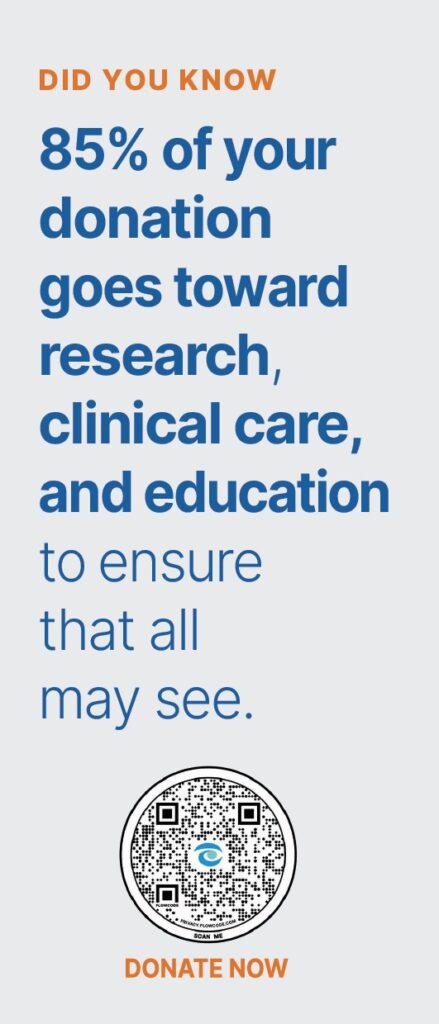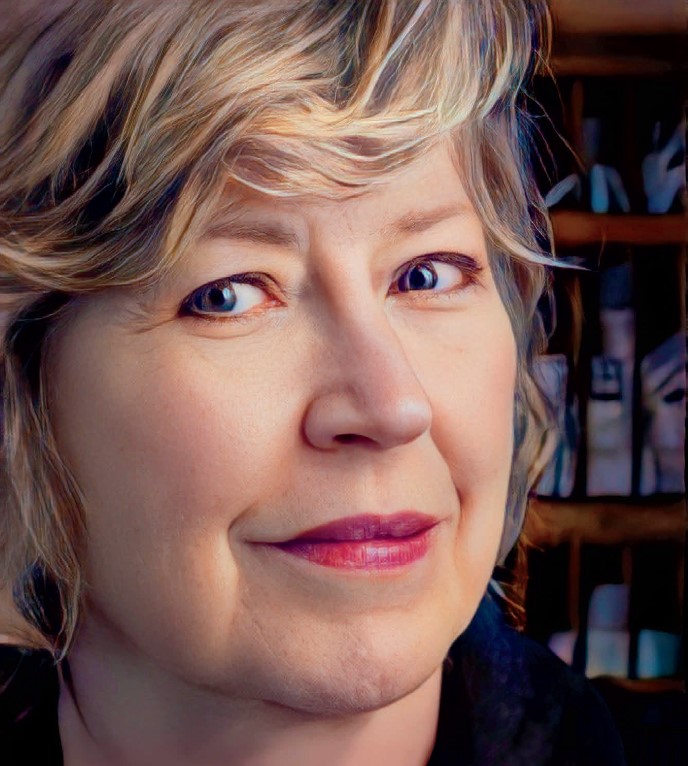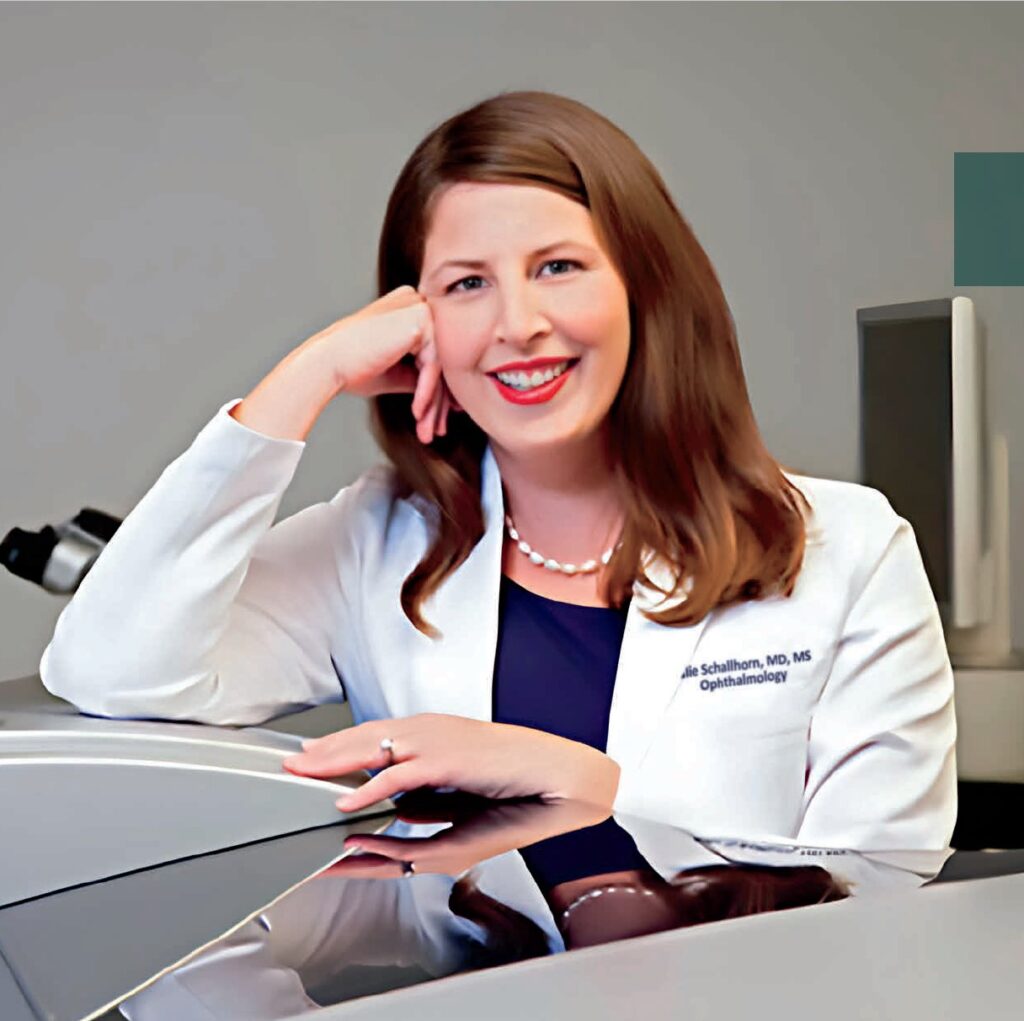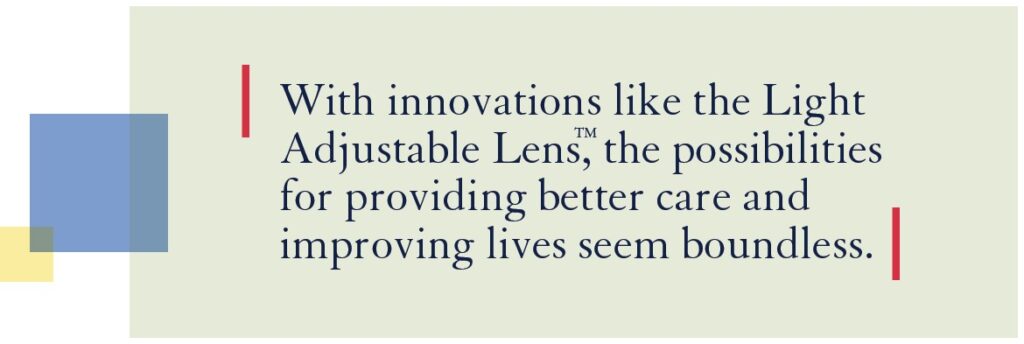(above) Michael V. Drake, MD, President of the University of California with Daniel Schwartz, MD

This past spring, a remarkable breakthrough in cataract technology brought renewed hope to patients seeking improved vision. All May See’s President Emerita, Kathleen Rydar, underwent cataract surgery at UCSF, where Associate Professor Julie Schallhorn, MD, MS, performed the procedure using an innovative Light Adjustable Lens™ (LAL). These groundbreaking lenses, developed by UCSF’s very own Daniel Schwartz, MD, in collaboration with Nobel Laureate, the late Robert Grubbs, PhD, and Julia Kornfield, PhD, from Caltech, revolutionize the post-surgery experience for patients by fine-tuning the visual correction using only ultraviolet light.
The origins of the LAL date back 25 years when Dr. Schwartz first envisioned the concept. As a retinal specialist, he was inspired to create an intraocular lens made of a light-sensitive material that could be adjusted non-invasively using a laser after the eye had healed and the refractive errorwas stable. This idea sparked a fruitful collaboration with Dr. Grubbs, leading to the realization of this groundbreaking technology. The U.S. Food and Drug Administration (FDA) approved the LAL in 2017, offering patients who had undergone cataract surgery the possibility of optimized vision without relying on glasses.

The All May See Foundation played a crucial role in supporting the initial efforts of the collaboration at Caltech, fostering the development of this extraordinary technology.
President Emerita receives light adjustable lenses
One of the first recipients of the LAL at UCSF, Ms. Rydar attests to its effectiveness, expressing her delight at the outcome. After three adjustment sessions, she can now read effortlessly and enjoy the beauty of the world, even spotting wildflowers on mountaintops without the aid of glasses.

Dr. Schallhorn, who performed the surgery, emphasizes the significant impact the LAL has had on her surgical practice. While existing techniques for selecting intraocular lens power are highly effective, some patients still require glasses. With the light adjustable lens, the risk of such errors is substantially decreased. Patients can now experience clear vision without their cataract and fine-tune their eyesight to their exact preferences, marking a momentous advancement in post-cataract surgical care.
Dr. Schallhorn is enthusiastic about the future of ophthalmology, particularly with the continuous development of new technologies. Reflecting on the field’s progress over the past 50 years, she marvels at how cataract surgery has transformed from a procedure with significant risk of potential vision loss to a routine
outpatient surgery.
Dr. Schallhorn and her colleagues at UCSF, alongside other visionaries in the field, are committed to exploring new ways to treat vision impairment and continue pushing the boundaries
of ophthalmic innovation.

The Light Adjustable LensTM represents a shining beacon of hope for cataract patients, illuminating a future where clearer vision and improved quality of life are within reach for countless individuals around the world.

